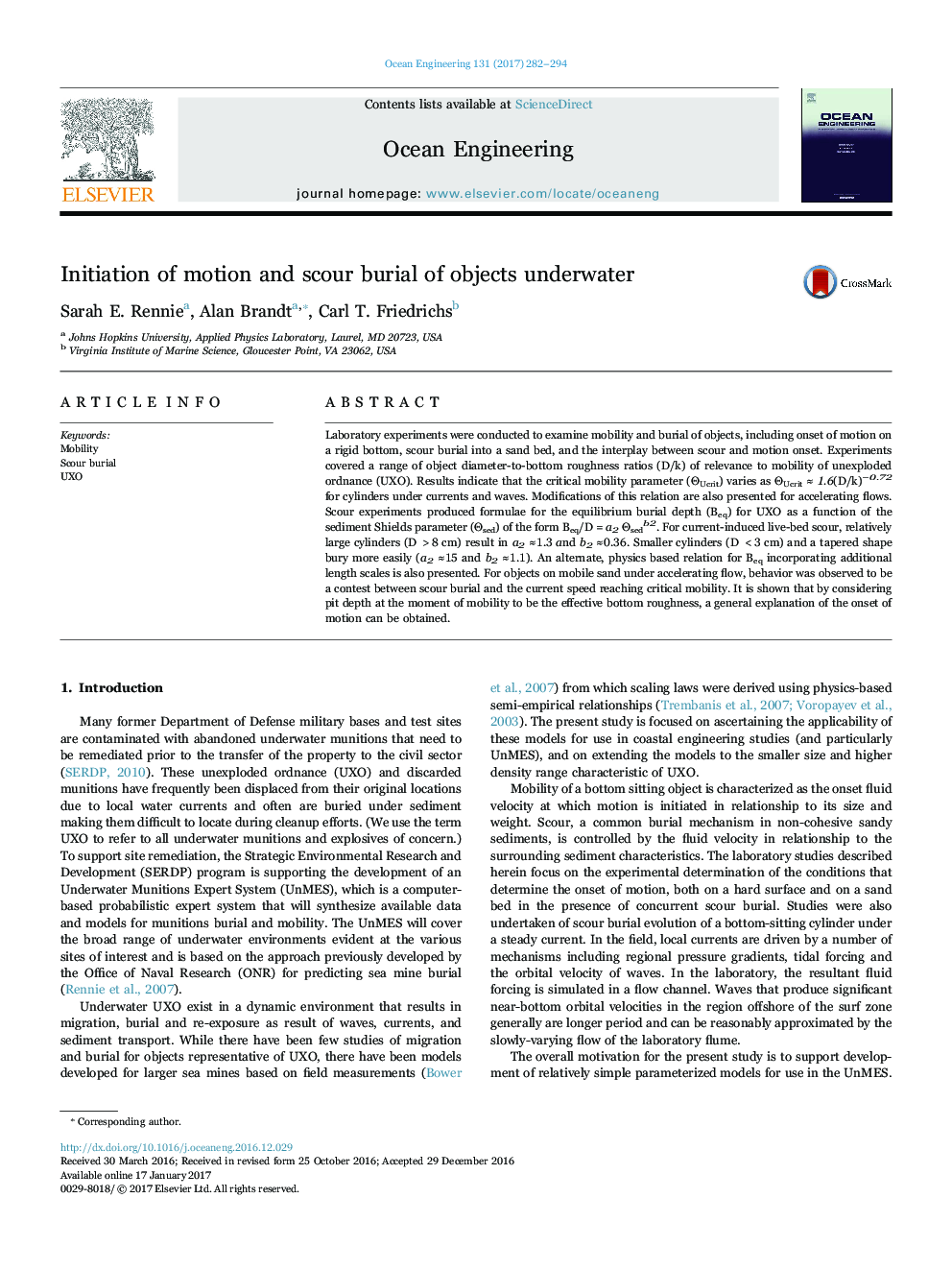| Article ID | Journal | Published Year | Pages | File Type |
|---|---|---|---|---|
| 5474544 | Ocean Engineering | 2017 | 13 Pages |
Abstract
Laboratory experiments were conducted to examine mobility and burial of objects, including onset of motion on a rigid bottom, scour burial into a sand bed, and the interplay between scour and motion onset. Experiments covered a range of object diameter-to-bottom roughness ratios (D/k) of relevance to mobility of unexploded ordnance (UXO). Results indicate that the critical mobility parameter (ÎUcrit) varies as ÎUcrit â 1.6(D/k)â0.72 for cylinders under currents and waves. Modifications of this relation are also presented for accelerating flows. Scour experiments produced formulae for the equilibrium burial depth (Beq) for UXO as a function of the sediment Shields parameter (Îsed) of the form Beq/D = a2 Îsedb2. For current-induced live-bed scour, relatively large cylinders (D >8Â cm) result in a2 â1.3 and b2 â0.36. Smaller cylinders (D <3Â cm) and a tapered shape bury more easily (a2 â15 and b2 â1.1). An alternate, physics based relation for Beq incorporating additional length scales is also presented. For objects on mobile sand under accelerating flow, behavior was observed to be a contest between scour burial and the current speed reaching critical mobility. It is shown that by considering pit depth at the moment of mobility to be the effective bottom roughness, a general explanation of the onset of motion can be obtained.
Related Topics
Physical Sciences and Engineering
Engineering
Ocean Engineering
Authors
Sarah E. Rennie, Alan Brandt, Carl T. Friedrichs,
